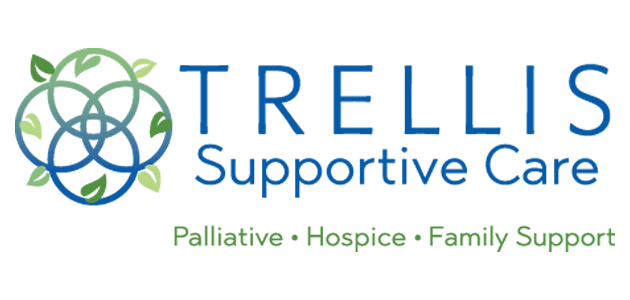Because We Care
Practical tips for family caregivers
May/June 2012
Spring is a time of renewed energy. A time to get out and do things that are within your loved one’s range of abilities. Here are some articles to help you help your family member have the best day possible, every day.
- Engaging activities for persons with dementia
- Common misconceptions about hospice
- When you gotta go, you gotta go
Engaging activities for persons with dementia
 It is usually obvious what a person with dementia is no longer able to do. But finding things your loved one CAN do may feel like a challenge, especially if memory loss is severe. Here are some tips:
It is usually obvious what a person with dementia is no longer able to do. But finding things your loved one CAN do may feel like a challenge, especially if memory loss is severe. Here are some tips:
Activities are important. They answer core human needs for identity and personal expression, life purpose and meaning, and connection with others.
Boredom or lack of engagement may lead your relative to unsafe activities, such as wandering. Or to activities that frustrate you, such as “reorganizing” the dresser or tearing bits of paper. Or to a change in mood that may bring on agitation or depression.
Activities can be
• task oriented: getting dressed, setting the table, sweeping the steps, dressing a doll;
• physical: taking a walk, washing the car, dancing, singing, clapping;
• creative: painting, telling stories, making cards, stringing beads;
• mental: reading, doing simple puzzles, watching a nature video, playing bingo;
• social: having a visitor, going to church, reviewing old photos.
Ideally, create a daily routine for your loved one. Provide a balance of activity and relaxation. Too much activity itself causes stress. Remember that tasks of personal care, such as bathing and dressing, are activities, too.
- Consider your relative’s history and interests. If he or she worked in an office, provide a desk and papers to “organize.” If a homemaker, ask for help folding towels, dusting, or winding yarn.
- Focus on creating pleasure. Not on completing the activity or doing it “right.” The goal is for your relative to feel engaged.
- Start the activity. A person with dementia is more able to participate than to initiate. Begin as a “team.”
- Follow their lead. Stay flexible; change activities as your relative changes. If going out to eat becomes too much, just go for a drive. If interest in dancing wanes, just sway or tap feet.
Return to top
Common misconceptions about hospice
 Many families caring for a seriously ill loved one struggle alone unnecessarily. They miss out on vital support services because they don’t understand what hospice can provide. Home visits by a nurse to manage pain and other difficult symptoms. Home visits by a nursing assistant to bathe your loved one and shampoo hair. Free prescriptions as needed for keeping your relative comfortable and out of pain. A volunteer to come give family members a break now and then. Access to a social worker to talk about emotional worries or concerns.
Many families caring for a seriously ill loved one struggle alone unnecessarily. They miss out on vital support services because they don’t understand what hospice can provide. Home visits by a nurse to manage pain and other difficult symptoms. Home visits by a nursing assistant to bathe your loved one and shampoo hair. Free prescriptions as needed for keeping your relative comfortable and out of pain. A volunteer to come give family members a break now and then. Access to a social worker to talk about emotional worries or concerns.
Would these services be helpful?
Perhaps it’s time to consider hospice.
Here are some common misconceptions.
- Hospice is for someone in the last few days of life. Hospice is for the last six months of life, with more time available if it is needed. Ask the doctor if he or she would be surprised if your loved one were to die in the next year. If the doctor says no, then it’s time to consider hospice. (No one can predict for sure one way or the other.)
- Hospice means you are giving up. Hospice focuses on patient comfort and quality of life. Although a “cure” is no longer the goal, research shows that people getting “comfort care” often live longer than they would without it!
- The doctor will call for hospice when it’s time. Doctors don’t like to “scare” patients. And, understandably, they don’t like to give bad news. Unless your relative has asked his or her doctor for candid feedback, the doctor may avoid bringing up hospice until death is very near.
- Hospice means you can no longer see your doctor. Your relative’s existing doctor is still involved, collaborating with hospice in a team approach to care.
- Hospice is a place someone goes. Some hospices have facilities where patients can move in. But the mainstay of hospice is service in the patient’s own home. Medical professionals make “home visits” to the patient, wherever the patient lives.
- Hospice is only for people with cancer. Hospice is for people with any type of disease, as long as the condition is incurable and in the advanced stage. This includes people in late stages of chronic diseases such as dementia, heart disease, and COPD.
If your loved one has Medicare, 100% of hospice services are covered provided he or she meets the eligibility requirements.
Return to topWhen you gotta go, you gotta go
Are you feeling housebound because of a family member’s incontinence? It may seem too risky to be out in public and not know where to find a toilet. “Cabin fever,” however, is bad for both of you.
Here is good news that just may open some doors. It’s a mobile app that locates nearby restrooms available to the public.
“Sit or Squat” is a free, somewhat humorous application you can download for your smartphone from sitorsquat.com.
Using the GPS in your phone, this app can zero in on your current location and then tell you about nearby facilities. (It lists the options from closest to farthest.) For planning outings ahead of time, you can enter an address, an intersection, a city, or a zip code.
Facilities listed can be public, in gas stations, in restaurants, in stores, etc. (The app is heavy on restrooms in Starbucks. Perhaps there is some advertising underwriting? The app itself was created by Charmin toilet paper.)
As of this writing, there are 117,955 toilets listed on the site. Facilities can be added by viewers and can even be rated. Any facility rated 2.5 stars or more is a “sit.” Anything less than 2.5 is “squat.”
You can view your search result by map. Or get a narrative description with phone number and hours of the facility (provided someone has entered that information). You can even view images if someone has uploaded a photo.
Like any app, it is only as accurate as the entries others have made. You may want to use it for initial research before an outing and call ahead to confirm the toilet is in fact available to the public. Or, if you are already out and about and find your loved one suddenly has the urge, well, if you gotta go, you gotta go… Give it a try.
Return to top

